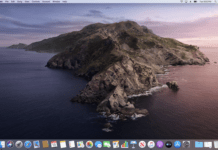Do Mac customers want to start strolling extra security software programs to guard themselves against malicious software, aka malware? The exact news is that Macs will be unaffected by the Conficker worm you may have to examine approximately, which can be infecting Windows computers as you read this. However, Mac users can rarely have enough money to be complacent.
What Is Malware?
“Malware” is the overall period for viruses, spyware, worms, and different virtual nasties which Windows customers are perpetually protecting themselves in opposition to. It is, extensively speaks, the software program you did not intend to be positioned for your computer. As with human illnesses, signs and symptoms might also or won’t be seen. But malware can thieve your statistics, provide a conduit for unsolicited mail distribution, assault websites in live performance with different hijacked computers, or honestly wreak havoc in your laptop while distributing itself to others. Do now not need.
How does malware get on your laptop? It can arrive transparently thru mainly constructed web websites designed to make the most security flaws — aka insects — in browsers. When installing the software program, it may be inadvertently agreed to use you while you don’t examine the best print before clicking “Agree” when installing the software program. Most frequently, it results from a rogue email attachment or a deceptive link to an internet website online which you click.

This is why it’s far honestly essential for Windows users to run security software program merchandise meant to defend their laptop from those intruders. These require every year subscriptions to live updated with the ultra-modern threats. The problem is that the medication is once in a while as worse than the disease; most security programs make themselves all too seen, flashing incomprehensible warnings on a regular foundation, slowing down your computer while they scan a whole lot of insight and usually retaining you in a steady kingdom of alarm, which, of direction, is supposed to get you to resubscribe and improve. (And do not even get me started on the fraudulent “protection” packages, which can be themselves malicious software programs.)
Malware and the Mac
But what does this have to do with the Mac? Well, as soon as upon a time, earlier than Mac OS X, while dogcows roamed the earth, there has been in truth malware which centered Macs, and lots of users did certainly use the anti-virus software program (which, it is well worth noting, was traumatic and intrusive even then).
But for most of this decade, Mac users have had the luxury of dwelling in a country of comfortable obliviousness to the unpleasantries of malicious software and the crud needed to keep away from it. The fact is that inside the nine years of Mac OS X’s existence, there has now not been any predominant outbreak that has hurt Mac users. This turned into one of the #1 reasons to buy a Mac, even if you keep in mind all other matters being identical.
Lately, however, there has been a variety of reporting that Macs are vulnerable and may be targeted via the rogue software program if they haven’t been already. This year, pirated copies of Apple’s iWork ’09 infected several Macs, letting them be secretly managed, under the hood, with the aid of unseen others across the internet.
(This is an extreme example of having what you pay for.) It’s not an actual virus, in that it doesn’t spread or take advantage of a flaw within the device; it would in no way manifest to you in case you didn’t, ahem, set up a software program you failed to pay for. All the equal, it way there are compromised Macs out there. Is it the tip of the iceberg?
Yes, it’s far, except that the iceberg may be extra of a giant popsicle. In different phrases, we without a doubt do not see the Mac universe teeming whenever quickly with the level of byte ailment that the Windows here lamentably does. But that does not suggest that Mac users can come up with the money to be optimistic about their appearance at ease computers. Maybe Macs will never have an equal quantity of malicious software programs. However, all it takes is one nicely crafted piece of malicious code to cause many users quite a few aches.
We’ve Changed Our Tune.
Why have we changed our tune about this? Well, we accept as accurate with Macs have remained off the horrific guys’ radar display all this time for two motives. The first is the relatively tiny market proportion. If the point of your software is to unfold itself, why goal 5% while you could goal 90%?






